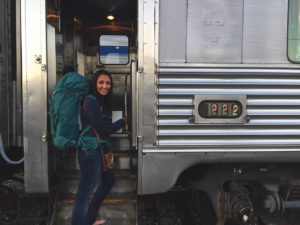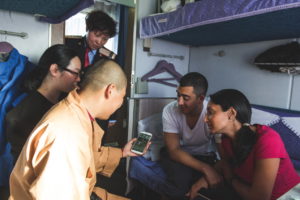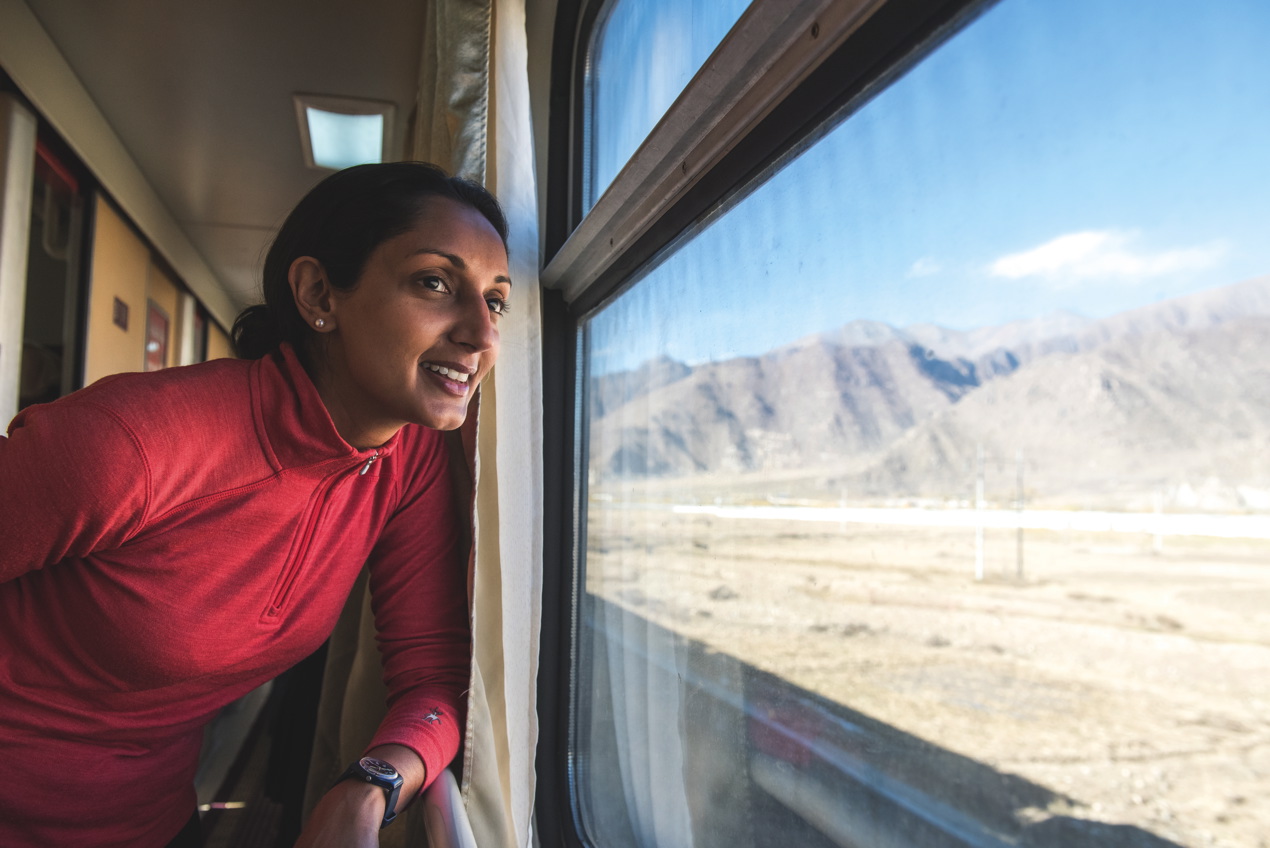Back on tracks
They’re a means of travel but also symbols of power, links to the past and homes for the lonely. After a 45,000 mile journey, Monisha Rajesh’s love affair with trains remains as ardent as ever
Crouching on a wall, I watched as my fellow passengers milled around in the darkness, smoking and stretching. A gentle waltz played over the speakers and I wandered up the platform to where I could just about make out the Chinese border. Piercing the stillness, a whistle signalled that the train was ready to move on and passengers reluctantly got to their feet, drawing on the last of their cigarettes in earnest and flicking the butts into the tracks. Back on board I got under my blankets and shuffled up to the window to watch as we pulled away from the platform at Erlian, the guards lined up with their arms in the air. As the Trans-Mongolian jolted and began its journey into China, I thought about how far I had come.
Six weeks earlier I had departed London St Pancras on a mission: to travel around the world in 80 trains. For far too long I’d read one article after another declaring that the romance of the railways is dying a slow death. Whereas luxury trains like the Venice Simplon-Orient-Express and South Africa’s Blue Train attract passengers hoping to capture a charm that no longer exists, regular passenger services are running out of steam: high-speed trains dominate across Europe and Asia, sleeper services are few and far between with classic routes fading away. Yet I refused to believe that this signalled an overall demise in our inherent love of train travel.

Determined to prove the naysayers wrong, I set out on a 45,000-mile journey across Europe, Russia, Mongolia, China, Vietnam, Thailand, Malaysia, Japan, Canada, USA, North Korea, Tibet and Kazakhstan. I’ve never enjoyed flying: as the lights and blinds go down, my blood pressure goes up. I twist in my seat, fold pillows in half, pull blankets over my head, lift up armrests, put them down again, whack my knees, hate the passenger in front, and enrage the one behind. While efficient, it’s still a disconnected way to travel. Lifting out of a city and dropping into another gives me no sense of place or proximity and it creates the illusion that the world is a huge place. By air, the notion of being in-between is constant, but by rail there are always villages, towns, and seas emerging like stepping stones between destinations.
Unlike any other form of transport, trains take a traveller deep into the guts of a city, stripping back its layers and revealing all its secrets: the smell of eucalyptus in the evening; the lovers kissing on a bench; the baby clothes drying in the doorway; and the peacock calls in the stillness of dawn. No one sees the voyeur at the train window, the one who watches strangers getting ready for bed, smiles at children climbing apple trees, and counts the stars in the clear night sky. And yet on board, a greater magic takes place. Within the four walls of a train compartment friendships ignite, relationships grow, politics are dissected, noodles are shared and books are swapped. Trains provide a ready-made rolling community where you’re free to be as involved or as aloof as you want. Conversation and good food are almost always within arm’s reach, and the sense of belonging is innate. The white noise of other people’s laughter, guitar-strumming and movies provides a cloak of comfort, and the reassurance that as long as you stay on board, you will never be alone.
When I set off from St Pancras I knew I would make friends, gather acquaintances and create a few enemies, but I had no idea how many people would come together to shape the curves of my journey. In North Korea there was Boston Bobby, a retired veteran with a Red Sox hoody and a zest for life who carried a brown envelope of photos of his family whenever he travelled alone. In Japan I met Tetsushi Yonezawa, a survivor of the Hiroshima bomb who felt indebted to the railways for saving his life by helping him escape the fallout, and in Canada I came across a retired railroader named Karen.
Karen was my queen. On her 50th birthday she had vowed never to fly again and we had met on The Canadian as she was making her way to her daughter’s wedding in Nice. Having boarded at Winnipeg she was travelling to Toronto, then New York, where she would take the Queen Mary 2 to Southampton, then the train to London, followed by the Eurostar to Paris and a TGV to Nice. “I told them: ‘See you at the altar,’” she said.

After almost seven months on the rails I came to understand what trains meant to different people. For some they will never be more than a convenience, but for others, trains are a symbol of strength, weapons of war, and political tools. Trains provide salvation for the poor, and a lifeline for commuters. They offer the chance to escape and homes for the lonely. Trains are a link to the past and a sign of the future. Above all, the romance of train travel can never die, any more than our interest in people and places can die.
After 45,000 miles, 23 countries and 80 trains, we swept up towards London, the last light dissolving into the horizon. Fields fell by the wayside and stations flashed by, terraced houses backing onto the tracks. Burrowing into the south of the city, the final train curved through Brixton, Stockwell and Clapham, the lights of Chelsea Bridge shaking gold into the Thames. Soon, the signs of arrival were all around: graffiti bulged from the walls and parallels of track closed in as we approached Victoria station. With a hiss and a jolt, the train finally came to a standstill. Stepping down onto the platform, I felt my city seep straight back into my bones: pigeons flapped through the rafters, engines slammed, and whistles blew. Commuters gathered on the concourse staring up at the screens, while others thundered down the stairs towards the Tube, shoving papers into plastic bins.
Exiting the station, I walked towards the amber light of a rumbling black cab with the distinct but delicious feeling of going home.
Monisha Rajesh is the author of Around the World in 80 Trains, published by Bloomsbury (£20)

Leave a reply
Your email address will not be published.